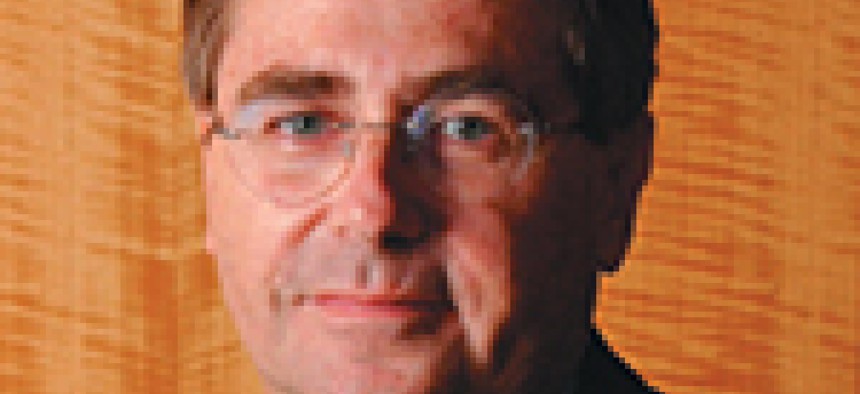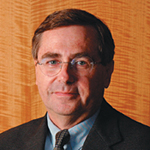For country--and market share

After American Airlines Flight 77 crashed into the Pentagon, Veridian Corp.'s employees rushed to the windows at their Pentagon City headquarters, where they could see the smoke rising into the sky. Many were ex-military, and they watched, frustrated, champing at the bit for a chance to strike back.
After American Airlines Flight 77 crashed into the Pentagon, Veridian Corp.'s employees rushed to the windows at their Pentagon City headquarters, where they could see the smoke rising into the sky. Many were ex-military, and they watched, frustrated, champing at the bit for a chance to strike back."We literally had 5,000 people ready to go anywhere they needed to go to fight the war," said Phil Lacombe, senior vice president of strategic initiatives for the Arlington, Va., company. This feeling intensified after Veridian employees found out that one of their own had been on the plane."We all wanted to be back in harness," he said.Within days, the government put out the call, asking companies to help the nation prepare for a new kind of warfare, one to be fought through preparation and prevention on the home front. This, said Lacombe, gave Veridian's employees the opportunity they were looking for."There were customers who needed us, so we were in harness," he said.At first, the company considered setting up a homeland security division, but after surveying its structure, Lacombe concluded three-fourths of Veridian would have to be transferred into such a division, basically defeating the purpose of such a move. Instead, the company created his position and gave him horizontal responsibility across Veridian's four divisions. Lacombe's job as it relates to homeland security is to maximize Veridian's existing capabilities and create integrated offerings aimed at federal customers' emerging needs.Like Veridian, many U.S. technology companies have responded both patriotically and practically to the government's war on terrorism. One of the most visible and dramatic responses has been a flurry of organizational reshuffling as companies attempt to align their businesses with the new homeland security requirements. While some observers have claimed these organizational changes are just cosmetic marketing ploys, industry officials insist the reorganizations have helped them focus company resources to better serve government customers.Chip Mather, co-founder of Acquisition Solutions Inc., a Chantilly, Va., procurement consulting services company, said the point of making organizational changes should be to find ways to deliver solutions, not sell technologies.And companies that have a coordinated approach to homeland security ? cutting down on multiple contacts by many different individuals ? have taken one step toward demonstrating that they have solutions."There were some companies who just looked at the business opportunity" of branding themselves as homeland security companies, Mather said, but "from the patriotic standpoint, there are a number of firms out there that said the government needs us and we can help." Companies generally have responded to the demand for homeland security solutions in one of three ways:Three companies that significantly restructured their businesses by setting up homeland security practices are Siebel Systems Inc., Computer Sciences Corp. and Unisys Corp.Siebel of San Mateo, Calif., pulled together 100 people to work on homeland security, with Matt Malden, vice president and general manager of public sector and homeland security, in charge."Our mission wasn't to develop technology but to spend the next four to five months talking to domain experts to understand the homeland security process," he said.At CSC of El Segundo, Calif., the company initially responded by appointing Ben Gianni as vice president for homeland security. His job was to understand agencies' homeland security needs and find capabilities within the company, said Paul Cofoni, president of CSC's federal sector.Based on Gianni's findings, CSC created a division called Enforcement, Security and Intelligence, made of elements drawn from other divisions, Cofoni said. It was formed in July, with Tim Sheahan as its president, but it already has more than $700 million in annual revenue and several thousand employees, he said.Unisys took its reorganization even further. For years the company waffled over whether to participate in the federal sector, including occasional efforts to sell the division. Greg Baroni, who in October 2001 was brought in from KPMG Consulting Inc. as president of Unisys' global public sector, had already decided that government services had to be the base for the public-sector's business.The first thing Baroni did was pull together the employees of the federal unit into a team and focus them on the company's capabilities in the area of homeland security."We tried to [follow] the money trail, [to determine] what initiatives would be funded, and we honed in on federal vs. state and local vs. commercial opportunities," Baroni said.Unisys chose four prime areas of concentration:In January, Unisys opened homeland security centers of excellence for each of the four areas. To support the new division, Baroni said the company has added a net of about 300 employees, hiring 500 new employees while cutting about 200 positions.The reorganization and targeting strategy paid off in August when Unisys won the $1 billion contract to create an infrastructure for the newly created Transportation Security Administration.Ray Bjorklund of Federal Sources Inc., a market research and consulting firm in McLean, Va., points to Unisys' success as proof that repositioning a company is not just a marketing ploy.I don't think it was that [the company] was posturing as a homeland security company. It just had the best deal," Bjorklund said.Rather than reorganize, most federal IT companies have created a top-level person or group to oversee and pull together the different elements of homeland security from different parts of the company.American Management Systems Inc., Fairfax, Va., formed an enterprise security service line, essentially a horizontal organization that coordinates homeland security activities in all the industry groups."Our approach is that there are an awful lot of commercial applications that can be re-purposed for homeland security needs," said William Purdy, AMS president and chief operating officer. "This is a time to leverage existing technologies in the near term rather than wait for exotic [solutions]."In addition, the company initiated a homeland security practice within AMS' public sector. Spokeswoman Anne Burt said it was established using a strategic accounts structure, to provide alignment with the proposed federal Department of Homeland Security and intelligence agencies.At Oracle Corp., Redwood Shores, Calif., Steve Perkins, senior vice president of public sector and homeland security, said the company formed a task force to pull together various parts of the business that focused on homeland security. Then it made sure it had the lines of business and functional groups in place to contribute to customer education about the security features in Oracle products the customers already used.Oracle already had a partner network in place, made up of some 12,000 companies; to augment it, the company launched a homeland security partner initiative. About 200 companies already in the network signed up for the new initiative, and 40 new companies joined specifically for homeland security, Perkins said.Some companies found their pre-Sept. 11 organizations were already well-suited to meet the government's post-Sept. 11 demands. Science Applications International Corp. of San Diego, for example, has had a homeland defense task force in place since 1998, said Wally Kaine, the senior vice president for homeland security."A number of our folks foresaw that there was an inevitability, that probably something would take place from a terrorist action at some point. It was more a matter of when, not if," Kaine said.After the attacks happened, the task force, which had been meeting monthly, started meeting weekly, then even more frequently, Kaine said.The task force serves as the focal point of the company's internal resources, so SAIC does not overburden its clients, and so the customers don't have to search through SAIC's 42,000 employees for information.


Reaction, three ways
Coordinating resources
Standing pat

"We literally had 5,000 people ready to go anywhere they needed to go to fight the war," said Phil Lacombe, senior vice president of strategic initiatives for the Arlington, Va., company. This feeling intensified after Veridian employees found out that one of their own had been on the plane.
Henrik G. de Gyor

"A number of our folks foresaw that probably something would take place from a terrorist action at some point." | Wally Kaine, SAIC
Henrik G. de Gyor
Reaction, three ways
- They have reorganized, pulling together functions scattered throughout the business into a new division.
- They have established a cross-functional position or office to coordinate activities in different divisions.
- They have done almost nothing, because their businesses already had a focus that translated easily to homeland security.
- Systems integration centered on information and data sharing;
- Cybersecurity related to networks and other IT infrastructure;
- Positive identification solutions, such as facial recognition and iris scanning;
- Emergency response and business continuity services.
Coordinating resources
Standing pat
NEXT STORY: One year later: Cornerstone of change